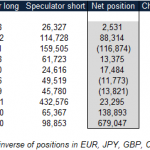Housing starts unexpectedly fell sharply, for once justifying the use of the description without quotation marks. The decline was concentrated in the multi-family segment. Though apartment construction statistics are highly volatile, this is far beyond the usual wide variation. The seasonally-adjusted annual rate had been above 400k each of the prior three months, so to suddenly tank to just 250k raises some questions.
Those would have to begin with the statistics themselves, as clearly there is a good possibility that this is a true anomaly. Whether it is or is not, however, doesn’t actually change the outlook for apartment construction all that much. The level of starts had broken above 380k (SAAR) as far back as November 2013. This construction segment has not experienced a whole lot of growth since then (confirmed by permits).
What is less questionable is that the pace of multi-family construction has clearly jumped off entirely from the prior slower trend into whatever is going on now. The 250k in starts in September may be part of that, but even if it is a statistical quirk to be erased next month by revision or rebound it isn’t going to change this clear deviation. You can make the case that the trend only slowed, again, around 2014 but it has done much more than that since last summer.



The prospect is further clouded by what the CPI data showed yesterday, meaning rents rising more robustly and in sustained fashion than they have at any time since 2007 (without requisite wage growth to support this). Something is clearly off. If rents were rising as a matter of increased demand obtained by a healthy economy, we should be seeing the opposite in construction. As single family housing, apartment construction should be booming given the lackluster pace of growth in the overall housing stock since the bust if rising rents were suggestive of restrained supply not meeting that demand.
To me, this backward situation argues for non-economic causes clashing now with economic conditions. In other words, I think it far more likely that rising rents are tied to the financial terms that floated the 2011-2013 mini-bubble that greatly amplified the resurrection of construction. Having borrowed heavily, as the Fed wanted, these largely institutional investors have relatively narrow terms to live up to, and if volume growth doesn’t occur (which in apartments might mean higher vacancy rates than modeled and forecast back in and around 2012 when the full recovery was in the mainstream all but assured) leveraged positions have to raise revenue from somewhere, largely via prices.














Leave A Comment